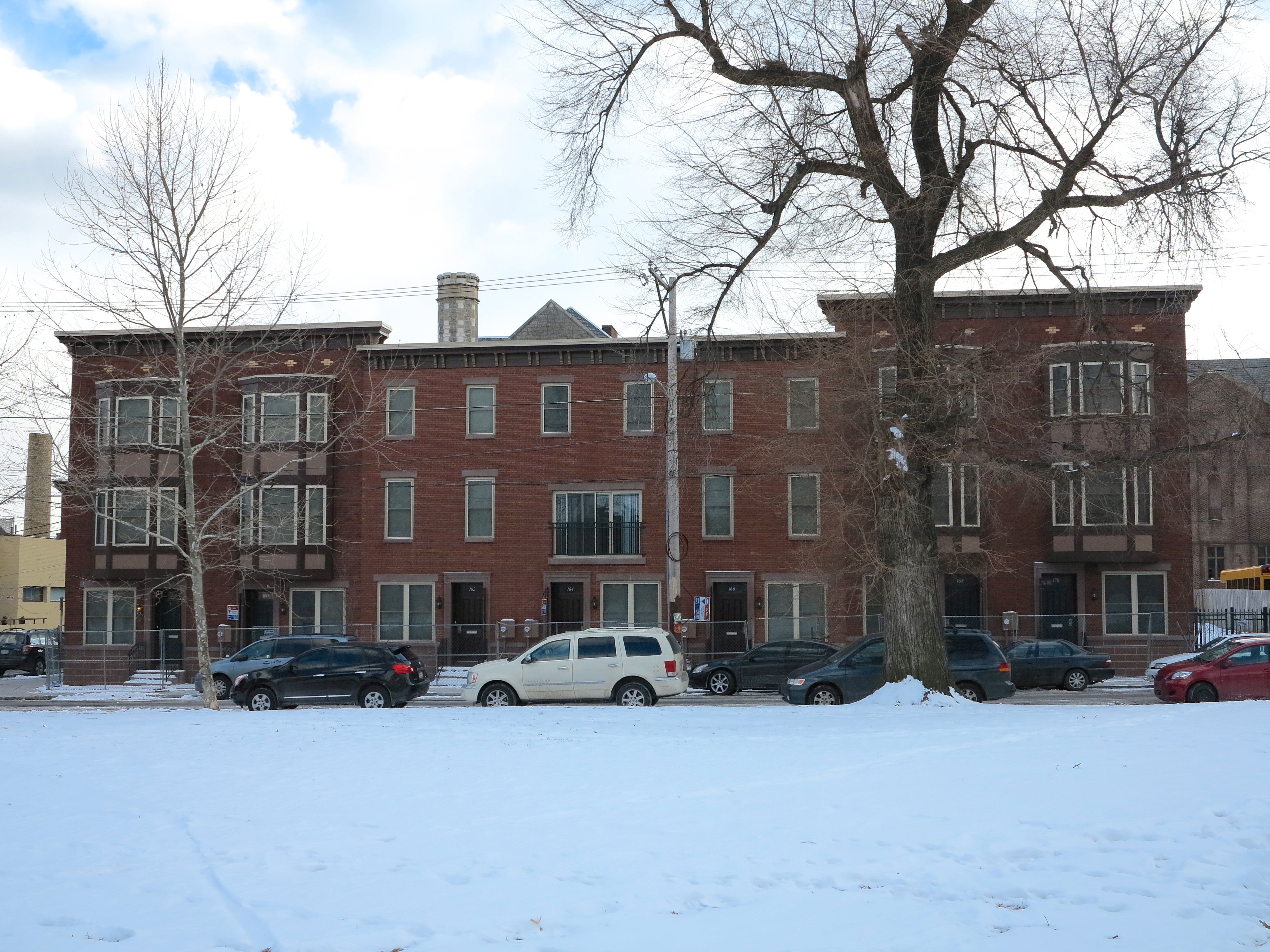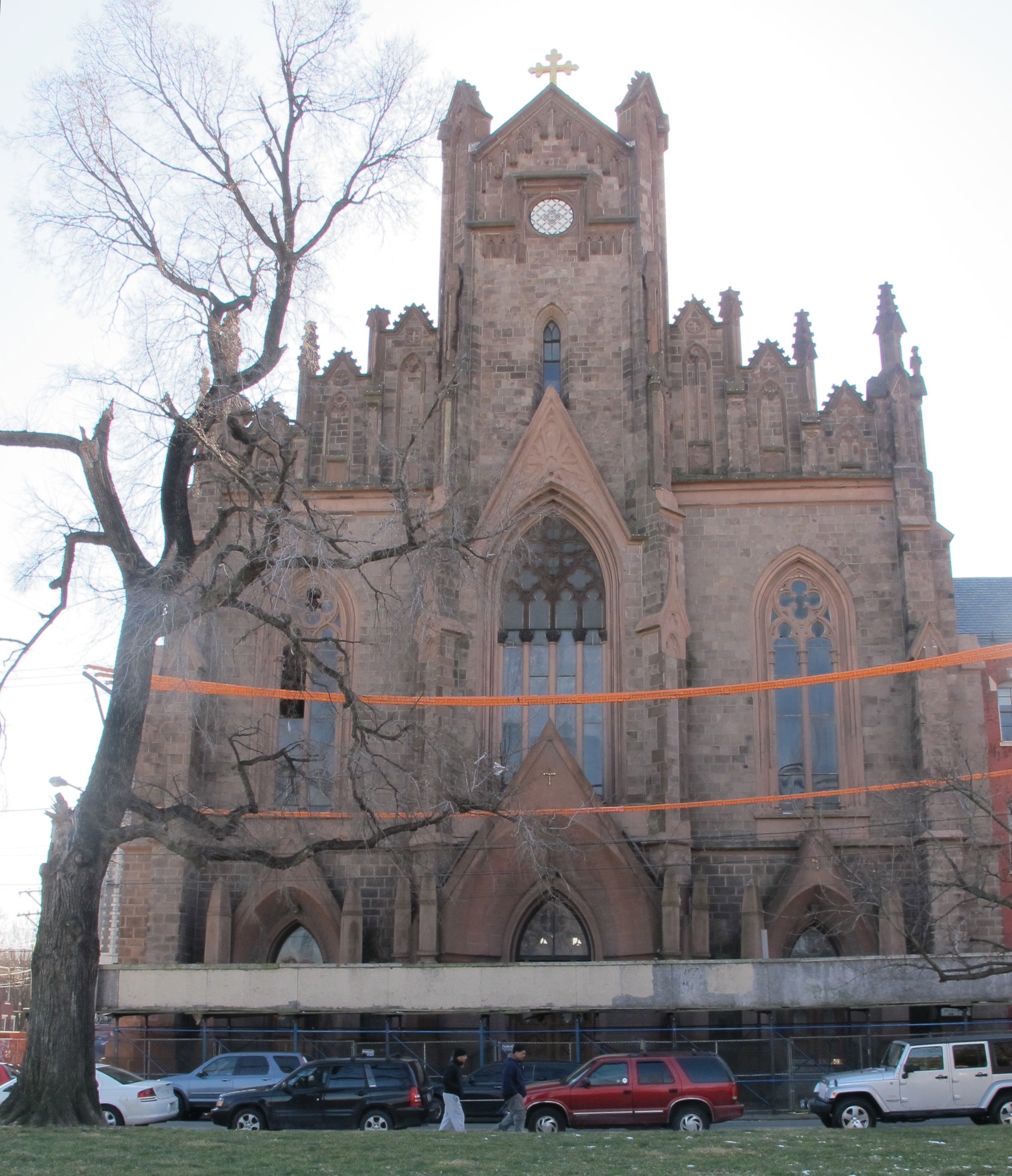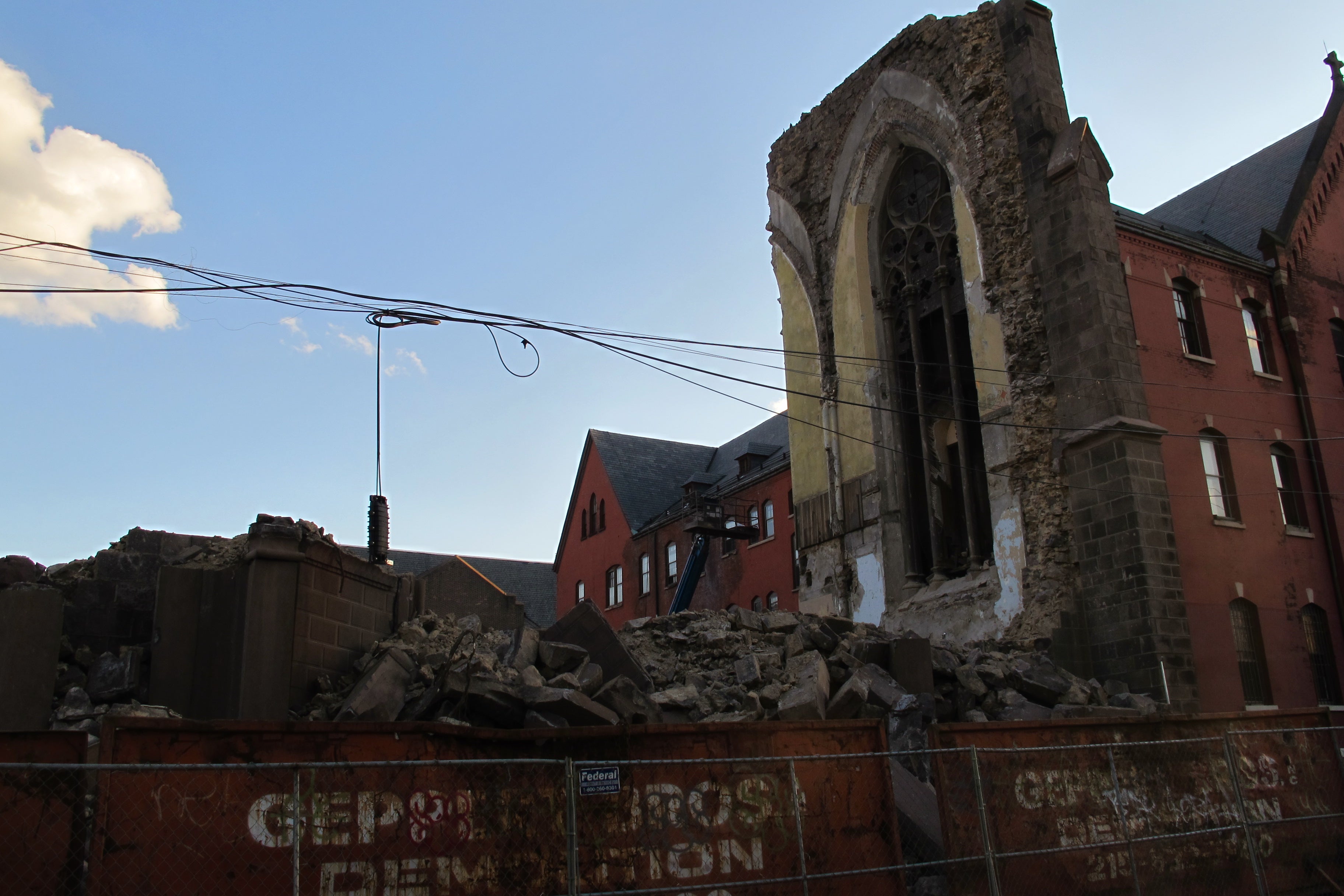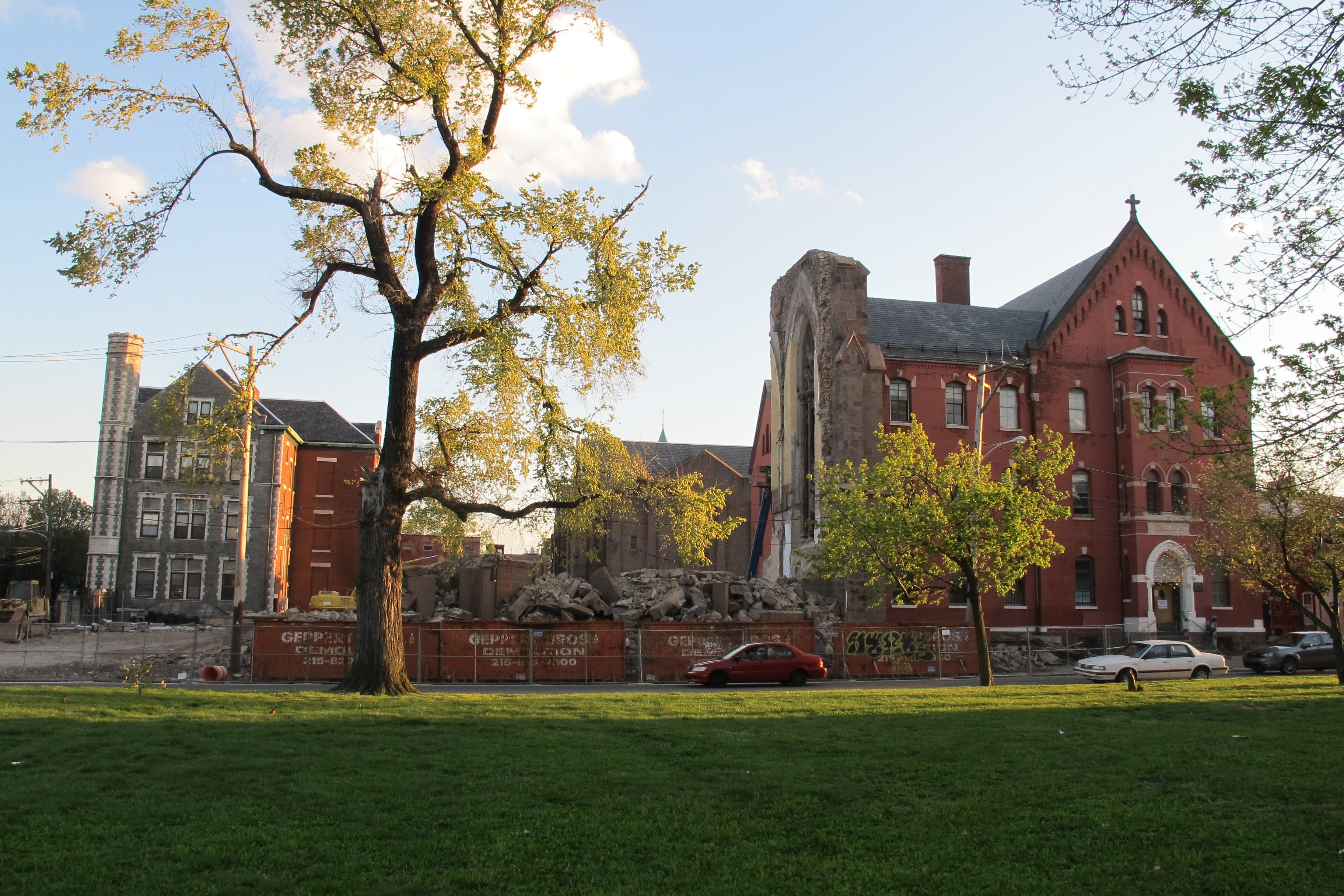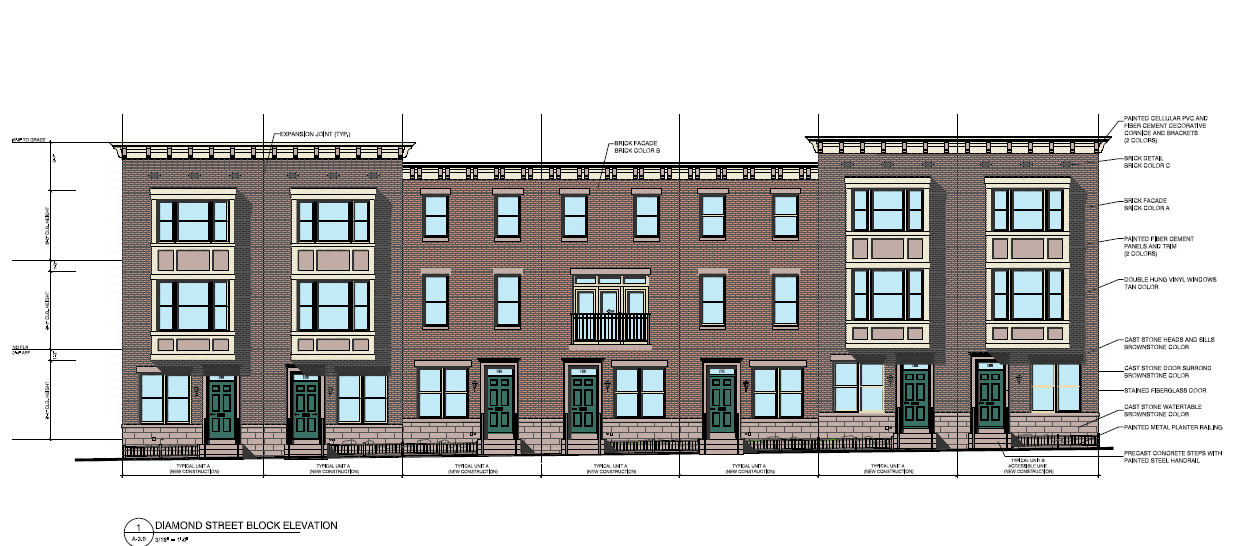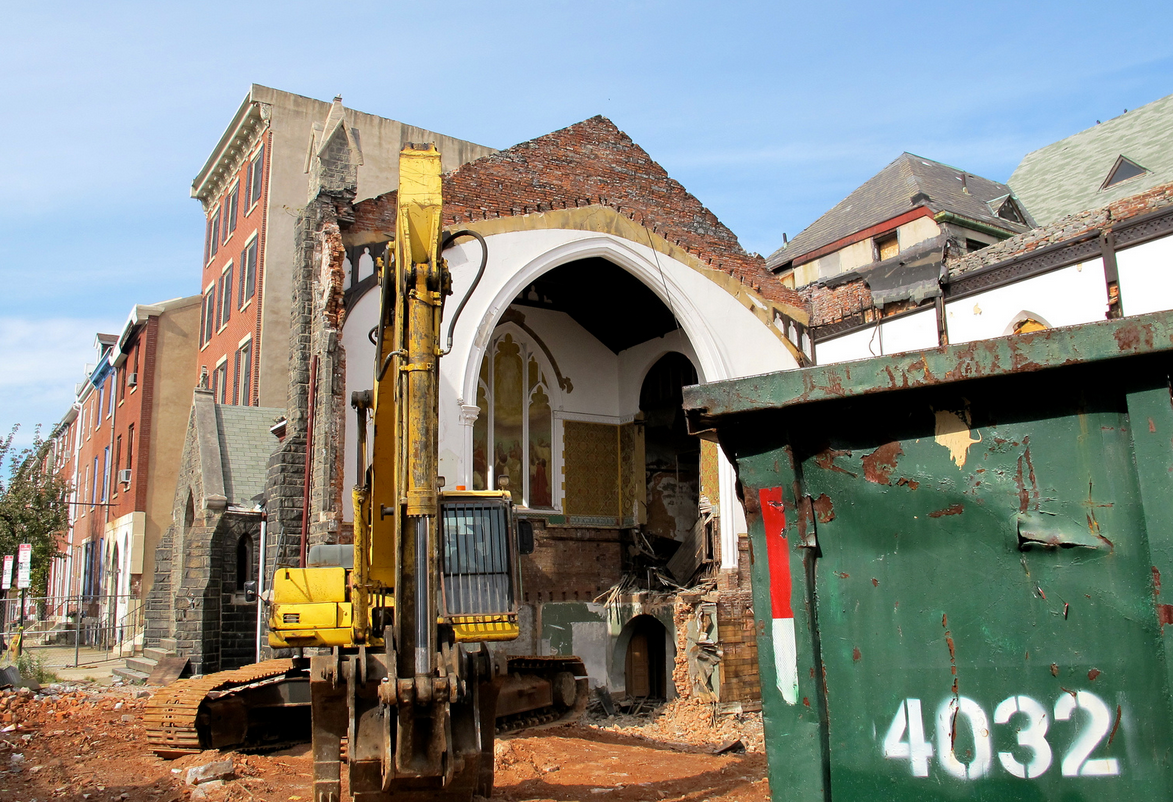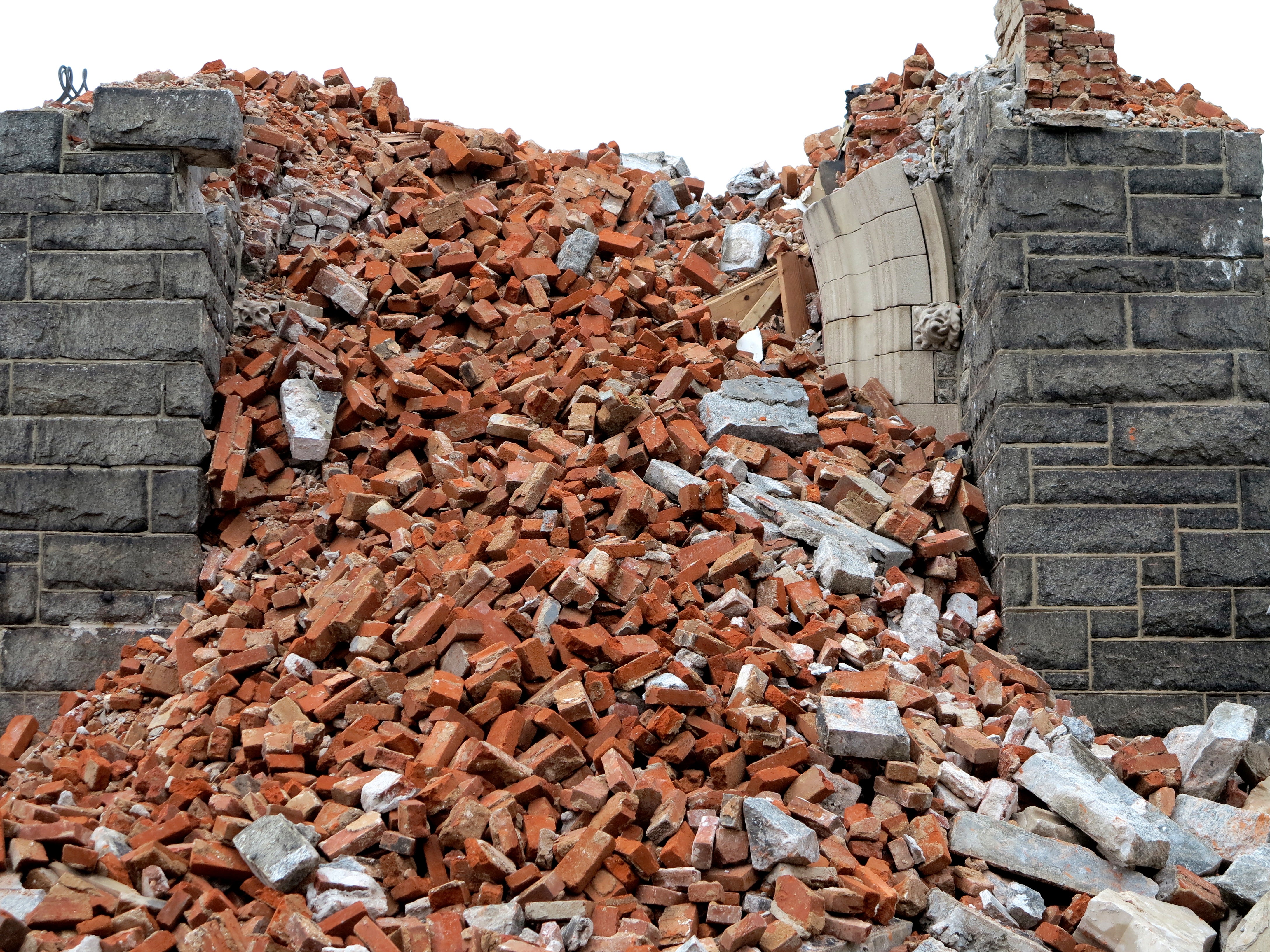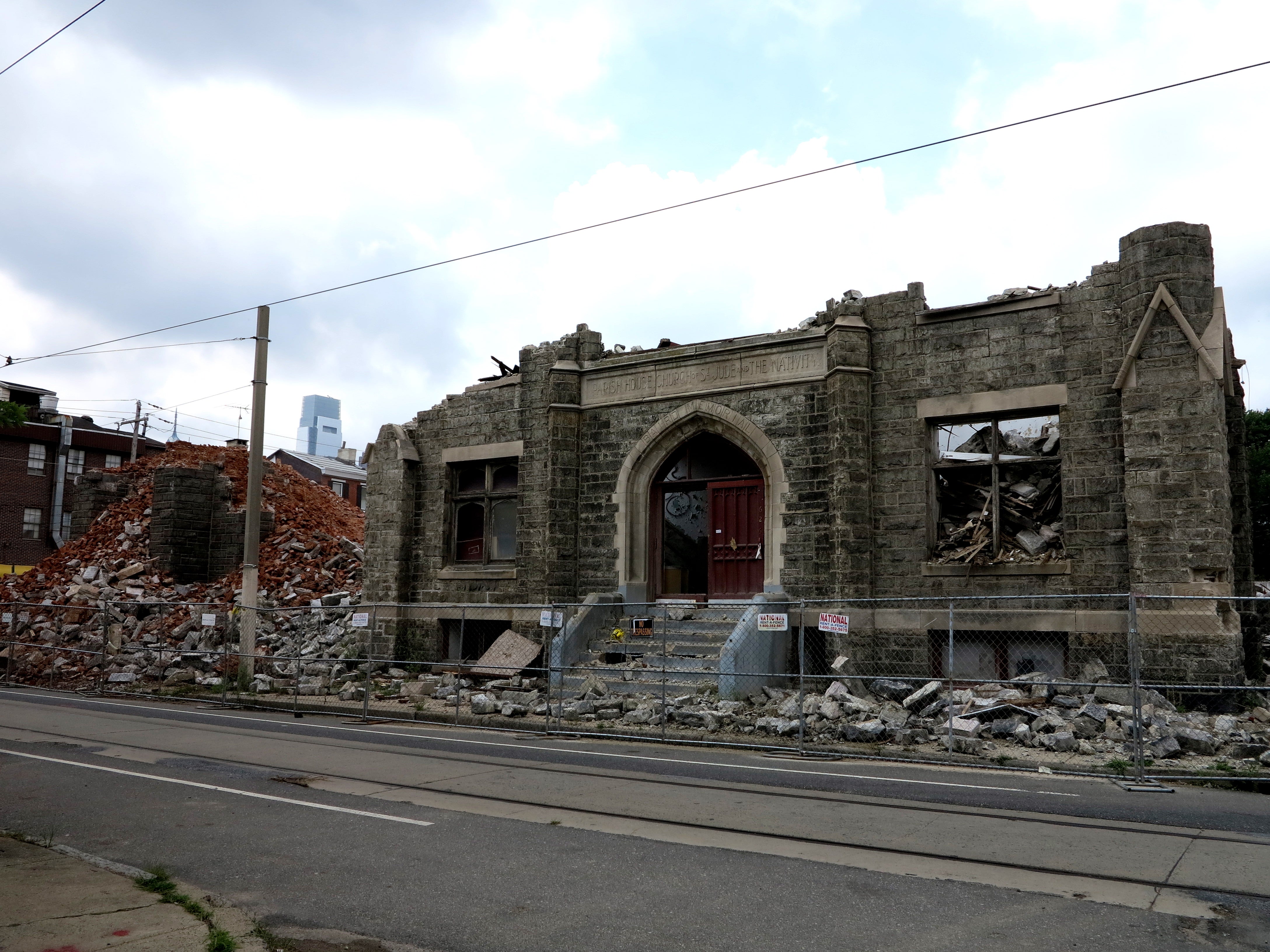Spotted: Rowhouses that replaced St. Boniface and Ruffin Nichols AME churches
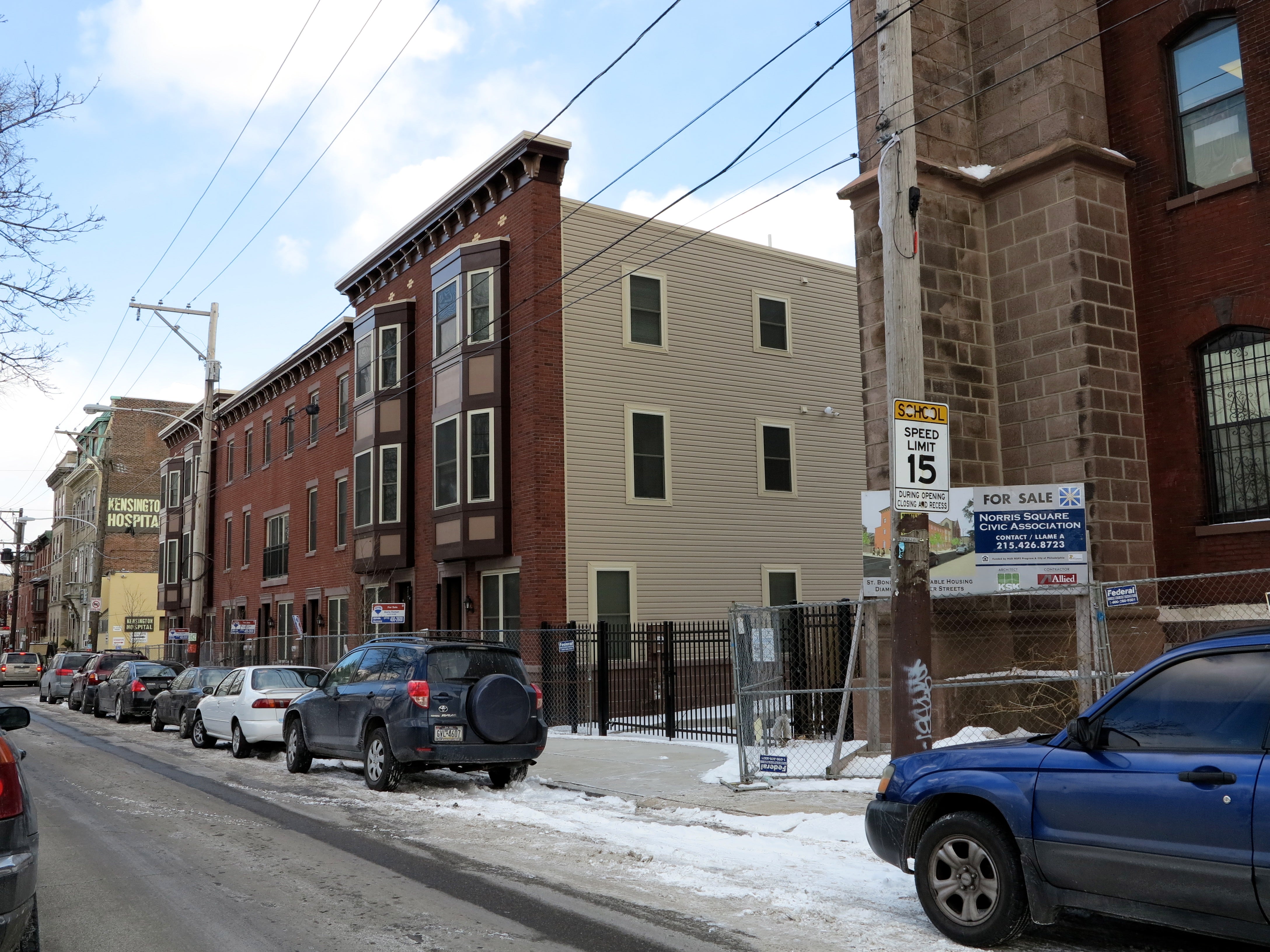
Our eyes are ever peeled for interesting sights and sites. In the course of one day I spotted two sets of rowhouses that replaced historic churches in Poplar and Norris Square. We followed along as the churches were demolished in recent years. Here’s a look at what went up after they came down:
Townhomes at St.Boniface, Norris Square
Back in 2012 a battle brewed over the demolition of St. Boniface, a burly brownstone Catholic Church that had graced the south side of Norris Square since 1872. As former parishioners lamented the loss, preservationists opposed the demolition of yet another shuttered historic church, part of a distinct complex including a school, rectory, and community center overlooking the square. For others the fight was over the character of what would replace the church.
Norris Square Civic Association (NSCA) initially proposed building 15 limited equity co-ops, an interesting approach to creating affordable homeownership opportunities. After a tug-of-war between NSCA and Councilwoman Maria Quiñones-Sánchez, a Norris Square resident herself, NSCA compromised and agreed to construct single-family rowhouses instead.
NSCA cut the ribbon on the Townhomes at St Boniface in 2013. Their design is a basic neo-traditional rowhouse. Some have articulated three-sided bays, brick facades are plain, cornices are undersized, sides and rear walls are clad in buff colored siding. These bland buildings may “fit the fabric of the neighborhood,” but are a limp design replacement for a moody brownstone church, but that’s the tradeoff we got thanks to millions in public support through city, state, and federal funds.
The seven three-bedroom rowhouses at 158-170 Diamond Street were among the 30 properties NSCA developed using $5 million in federal Neighborhood Stabilization Program (NSP2) dollars and $5 million in state Redevelopment Assistance Capital Program funds. Of the new units developed, the St. Boniface rowhouses are the most expensive.
Six of the rowhouses are listed for $200,000, and the slightly larger corner house is $215,000. None of the seven townhouses have sold. Though Maria Sourbeer, NSCA’s director of real estate development, said some are in contract she could not say how many.
In large part, Sourbeer said, the challenge is finding interested buyers who meet the strict eligibility criteria.
A prospective buyer, for example, cannot make more than 120% of the Area Median Income (AMI), which for a family of four is nearly $95,000. (AMI for a family of four in the Philadelphia area is close to $79,000. Median income for Philadelphia residents is about $37,000.) For lower-income families NSCA is able to subsidize the purchase price of the units through a forgivable loan. That loan would be secured by a second mortgage held by NSCA which would sunset in 10-20 years. The amount of the subsidy varies based on household income and size. The larger the amount, the longer the term of the second mortgage. In exchange owners must to keep the townhome as their primary residence for the duration of the lien.
“These are not great deals for somebody who is looking to flip,” Sourbeer said. “They’re good deals for somebody who is from the neighborhood and wants to stay in the neighborhood.”
But even after marketing these townhouses to likely buyers through NSCA’s community networks there’s been little headway. NSCA signed a short-term contract with ReMax to publicly list these properties hoping to do better by casting a wider net.
Say what you will about losing the church, it’s positive that NSCA is reusing much of the other ex St. Boniface campus buildings. But NSCA was pushed to build townhouses here. Would they have done better with multi-family housing? Was the entire headache to build these worth it to NSCA?
“It’s still hard,” said Sourbeer. “I feel strongly that we’ll find the right fit.”
Spring Arts Square, 11th and Mt. Vernon, Poplar
Virtually every Philly urban photographer snapped a shot of Ruffin Nichols AME, held in suspended demolition for most of 2013. It was striking in its half-demolished state for months on end. But I almost passed the corner of North 11th and Mt. Vernon streets without realizing I was staring at the housing being built in the church’s stead.
For this corner, renowned ecclesiastical architect Napoleon LeBrun designed the muscular masonry Church of the Nativity, built in 1844. Later it became Ruffin Nichols AME. Next up: a mix of 14 2-bedroom, 2-bath condos and four single-family townhomes, currently in varying stages of completion.
Instead of LeBrun’s beefy building the current designers, Harman Deutsch Architects, opted for smooth black brick with standing seam bays and Tetris-like blocks of windows.
The 18 units are currently listed by ReMax as a “gated community” called Spring Arts Square, starting from $329,900 and up. Here’s the listing for 1105 Mt. Vernon #A.
WHYY is your source for fact-based, in-depth journalism and information. As a nonprofit organization, we rely on financial support from readers like you. Please give today.



